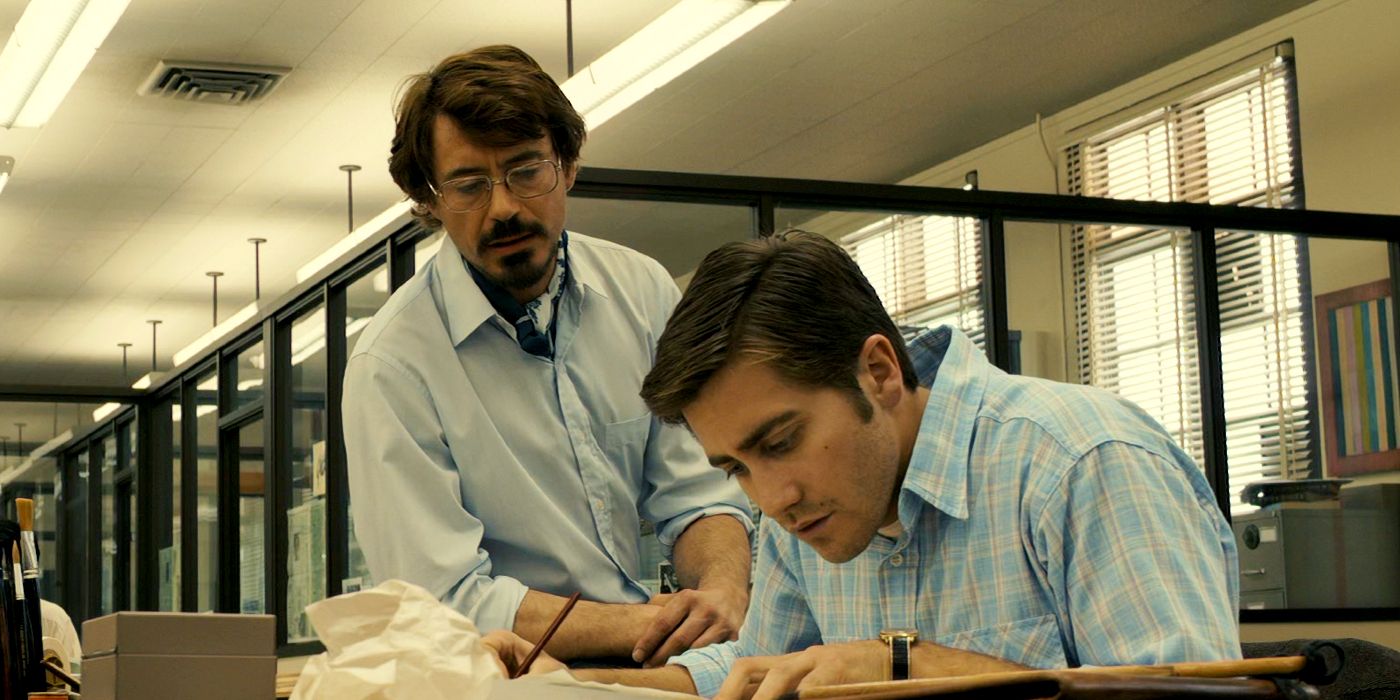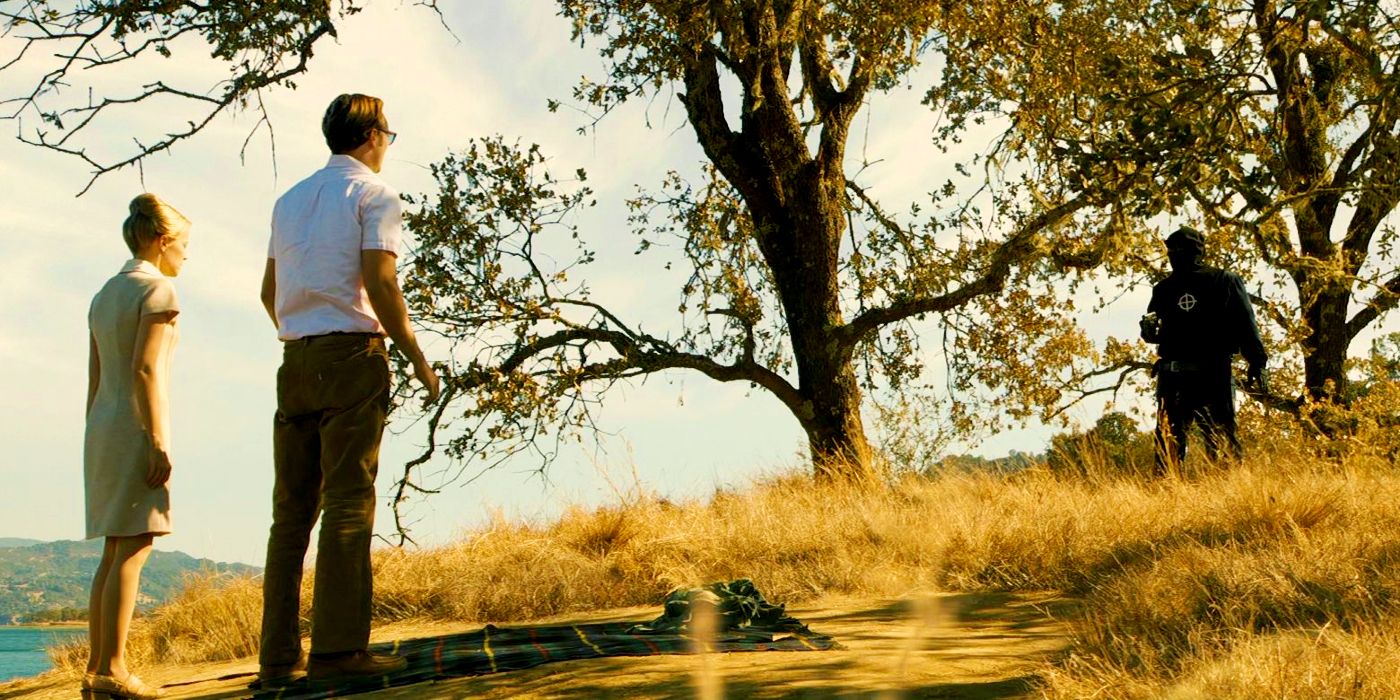David Fincher's 2007 crime-thriller, Zodiac, creates a narrative out of the real-life crimes of the titular serial killer, who was active in Northern California in the late 60's and early 70's. While the notoriously unsolved Zodiac case consists of seven confirmed victims, the killer claims to have committed a total of 37 murders.
Based on true crime writer Robert Graysmith's novel of the same name, Fincher's Zodiac follows those tracking the unidentified murderer as he mocks their failure, soaks up media attention, and continues to kill. Graysmith, (Jake Gyllenhaal), was a cartoonist at the San Francisco Chronicle when the paper began to receive encrypted notes from the Zodiac killer. Obsessed with cracking Zodiac's code, Graysmith became increasingly engrossed in the case, eventually abandoning his career as a cartoonist to write a series of true crime novels. As is the case in Fincher's film, Graysmith's unflinching interest in the case eventually cost him his marriage to his second wife, Melanie (Chloë Sevigny). Also involved in the case are crime reporter Paul Avery (Robert Downey Jr.) and San Francisco police inspector Dave Toschi (Mark Ruffalo).
Zodiac's first three attacks took place in secluded areas where he targeted privacy-seeking couples. His first confirmed victims, teenagers David Faraday and Betty Lou Jensen, were on a date before Zodiac fatally shot both of them in their parked car. Months later, he confessed to the murders while calling the police to report his recent assault on another young couple, Darlene Ferrin, who died during the shooting and Mike Mageau, who was injured but lived. Zodiac's third set of victims, Bryan Hartnell and Cecilia Shepard, were picnicking by Lake Berryessa in Napa County where they were held at gunpoint and tied up. Zodiac stabbed the pair repeatedly and while Shepard succumbed to her words, Hartnell survived and was able to deliver his account of the attack. Zodiac's seventh confirmed victim was taxi driver, Paul Stine, who he shot in the head before fleeing the scene.
Zodiac: How The Movie Compares To The Real Life Cases
Fincher retained key details from the case, such as a piece of Paul Stine's shirt being mailed to the San Francisco Chronicle along with a letter in which Zodiac threatened to murder school children. Fincher, who grew up in the Bay Area, remembers this from his childhood, and was told of Zodiac's threats by his father after asking why his school bus was being followed by highway patrol. Also mentioned in the film are the husband and wife who were able to decipher a letter that included the quote "man is the most dangerous animal of all", a very real reference Zodiac made to Richard Connell's 1924 short story, "The Most Dangerous Game". Accurate details of the circumstantial evidence surrounding Graysmith and Toschi's favorite suspect, Arthur Leigh Allen, including his Zodiac watch and shoe size, were also included in Fincher's film.
Fincher portrays the crimes with great attention to detail, but chose to omit the Faraday and Jensen murder, instead only showing the attack on Ferrin and Mageau to highlight Zodiac's penchant for assaulting couples parked on "lovers lanes". In the film, accurate to the real-life correspondence between Zodiac and the media, it was after this shooting that newspapers, including the San Francisco Chronicle, received encrypted letters from the killer, included the symbol Bryan Hartnell described on his assailant's hood. The relationship between Chronicle cartoonist Robert Graysmith and crime reporter Paul Avery is exaggerated in Fincher's film, as the two did not meet until after they had both left the newspaper. The film focuses more on the confirmed victims and less on cases tentatively linked to the Zodiac, such as the 1963 shooting of Robert Domingos and Linda Edwards and the 1966 stabbing of college student Cheri Jo Bates, though we do see Fincher's Paul Avery assisting the Riverside Police Department, which handled Bates' case.
Fincher has said that attention to detail was a key goal of his while making the film and that himself, producer Bradley J. Fischer, and writer James Vanderbilt interviewed witnesses, family members of suspects, investigators, the two surviving victims, and the mayors of San Francisco and Vallejo. Going so far as to hire a forensic linguistics expert to further examine Zodiac's sentence structure and spelling, Fincher was determined to conduct an accurate re-telling of the crimes. After meeting Fincher and seeing the film, inspector Dave Toschi commended the filmmaker on his thorough research. The film's ending, much like the case, is left open-ended, a purposefully unsatisfying conclusion which Fincher felt was darkly fitting.


